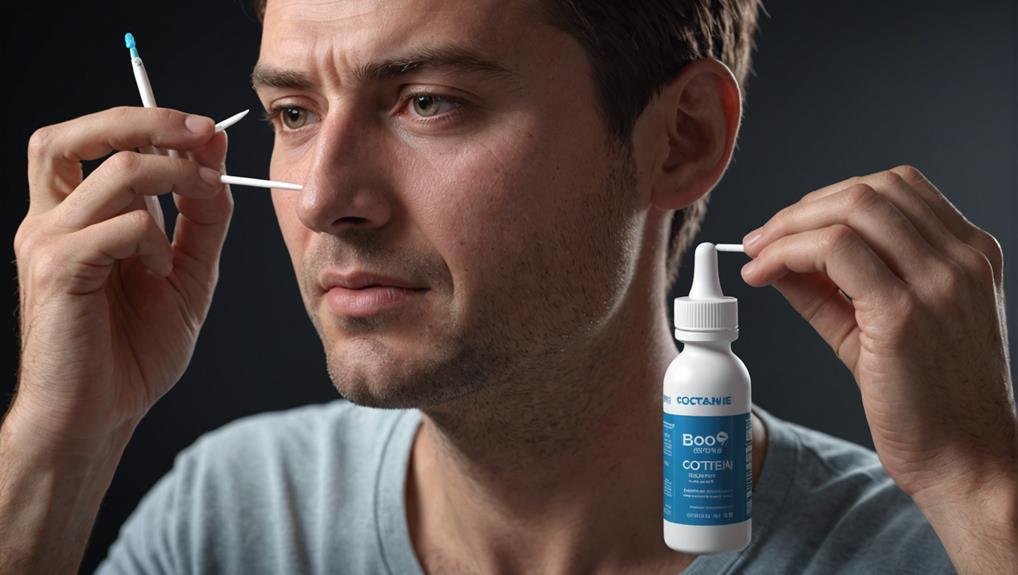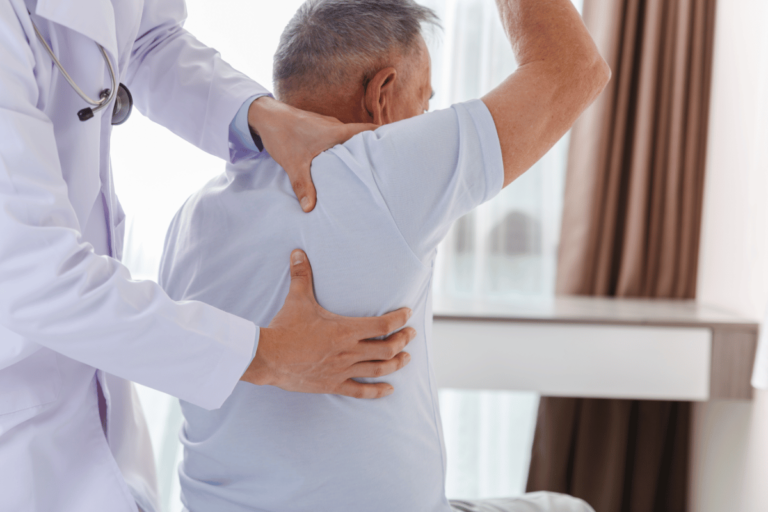Earwax Woes: Expert Tips for Removal
When dealing with earwax issues, remember to use safe methods for removal. Avoid inserting objects like cotton swabs, as this can push wax deeper. Instead, opt for gentle solutions such as water or saline. If you're unsure, seek help from a healthcare professional for correct removal. Keep in mind, improper techniques can lead to complications like ear irritation or even hearing loss. Mastering safe removal practices is essential for maintaining excellent ear health. Further tips await to help you handle earwax troubles effectively.
Key Takeaways
- Use safe methods like over-the-counter drops or warm water flush.
- Avoid inserting objects to prevent pushing wax deeper.
- Consult a professional for ear irrigation if needed.
- Soften earwax with olive oil or almond oil drops.
- Prioritize preventive measures to reduce earwax buildup risks.
Understanding Earwax and Its Functions
Do you know the essential functions of earwax and how it contributes to the health of your ears?
Earwax, also known as cerumen, serves as a natural protector and cleanser for your ears. Its composition includes a mixture of fatty secretions and debris, which helps to trap dust, bacteria, and other particles, preventing them from reaching the delicate inner ear.
Additionally, the movement of your jaw aids in propelling these secretions through the ear canal, maintaining the cleanliness of your ear. This process is vital in preventing infections and maintaining the overall health of your ears.
Understanding the function of earwax highlights its significance in safeguarding your hearing and ear health.
Impact of Excessive Earwax Buildup
Excessive buildup of earwax can result in various complications ranging from discomfort to potential hearing loss and infections. When earwax accumulates excessively, it can lead to hearing impairment by blocking sound waves from reaching the eardrum.
Additionally, the presence of too much earwax can stimulate the vagus nerve, triggering coughing reflexes and potentially causing respiratory issues.
In some cases, untreated buildup may pave the way for infections due to the warm and moist environment created within the ear canal. It's essential to monitor earwax levels to prevent these consequences.
If you experience symptoms like earaches, diminished hearing, or persistent coughing, consult a healthcare professional for proper evaluation and management.
Importance of Proper Earwax Removal
Proper earwax removal is vital for maintaining healthy ears and preventing potential complications. Using the proper technique and safe practices is essential to avoid damaging the delicate structures of your ear canal.
When removing earwax, it's important to refrain from inserting objects like cotton swabs that can push the wax deeper. Instead, opt for safe methods like using water, saline solution, or hydrogen peroxide to soften the wax. Over-the-counter eardrops can also help break up earwax for easier removal.
If you're unsure about the best approach, seeking medical help ensures that the removal is done correctly and minimizes the risk of injury. Prioritizing proper earwax removal techniques is key to preserving your hearing health.
Risks Associated With DIY Removal Methods
When attempting to remove earwax through do-it-yourself methods, it's important to be aware of the potential risks involved. Using DIY methods can pose several dangers.
Inserting objects like cotton swabs into your ear can push the wax further in, leading to blockages or damage to the eardrum. Irrigation methods, such as using water or hydrogen peroxide, can cause infection if not done correctly, potentially harming the delicate skin of the ear canal.
Over-the-counter ear drops may not be suitable for everyone and could cause allergic reactions or skin irritation. It's vital to proceed with caution when attempting DIY earwax removal to avoid these potential risks and safeguard the safety of your ears.
Effective Softening Agents for Earwax
To effectively soften earwax for removal, consider utilizing gentle solutions such as water, saline solution, or hydrogen peroxide. These natural remedies are safe and effective in breaking down earwax buildup.
Herbal solutions like chamomile or olive oil can also help soften the wax, making it easier to remove. By using these gentle techniques, you can avoid pushing the earwax deeper into the ear canal, which may cause more problems.
Remember to always use these oil treatments sparingly and consult with a healthcare professional if you experience any discomfort or if the earwax doesn't easily come out. Following these tips can help you safely soften earwax for removal without causing harm.
Over-the-Counter Solutions for Removal
Consider utilizing over-the-counter eardrops as a safe and effective solution for breaking up earwax buildup. These drops often contain carbamide peroxide, which helps soften the wax, making it easier to remove.
When using over-the-counter solutions, follow the instructions carefully, and avoid prolonged use to prevent irritation. Additionally, home remedies like using warm water or saline solution can also aid in loosening earwax naturally.
While natural solutions like olive oil are popular, consult with a healthcare provider if you have a history of ear issues or if the earwax blockage persists. Over-the-counter options provide a convenient way to manage earwax buildup, but always seek professional advice if you're unsure about the best approach for your situation.
Mechanical Methods for Earwax Removal
Utilize specialized tools and techniques for the mechanical removal of earwax to effectively address stubborn blockages and alleviate associated symptoms.
When dealing with earwax buildup, mechanical methods provide a targeted approach to safely dislodge and extract hardened wax. Clinicians skilled in ear care can use tools such as curettes, suction devices, and irrigation systems to aid in the removal process.
These techniques promote thorough cleaning while minimizing the risk of injury to the delicate ear canal. Seeking professional assistance for mechanical earwax removal is essential for maintaining excellent ear hygiene and health. Remember, improper attempts at removing earwax can lead to complications, so it's best to rely on trained professionals to perform these procedures accurately.
When to Seek Medical Assistance
Seek medical assistance promptly if you experience severe pain or sudden changes in your hearing due to earwax buildup. Medical intervention is essential in such cases to prevent complications.
Professional guidance guarantees the safe and effective removal of excessive earwax. Safety precautions are crucial when dealing with potential issues related to earwax, as incorrect removal methods can lead to further problems.
Complications such as earaches, infections, and hearing loss may arise if earwax buildup isn't addressed promptly by a healthcare provider. Remember that seeking medical help when faced with severe pain or sudden hearing changes can help prevent more significant issues and ensure proper care for your ear health.
Common Misconceptions About Earwax Removal
Common misconceptions about earwax removal often lead to ineffective practices and potential risks for your ear health. It's important to debunk common myths surrounding this topic to make sure you're following professional guidance.
One prevalent misconception is that inserting cotton swabs into your ears is a safe way to remove earwax. In reality, this practice can push the wax further into the ear canal, causing blockages and potential damage.
Another myth is that ear candling is an effective method for removing earwax. However, this technique can actually lead to burns, ear canal obstructions, and further complications.
To safeguard your ear health, always seek professional advice and avoid falling for these common misconceptions about earwax removal.
Preventive Measures for Future Buildup
To prevent future earwax buildup, it's essential to adopt regular ear hygiene practices and incorporate preventive measures into your routine. Here are three key strategies to help you maintain healthy ears:
- Ear hygiene: Clean your ears regularly with a washcloth during your bath or shower to prevent excessive wax accumulation.
- Avoid cotton swabs: Refrain from using cotton swabs to clean your ears, as they can push wax deeper into the ear canal, leading to blockages.
- Regular ear check-ups: Schedule periodic visits with a healthcare professional to monitor your ear health and address any concerns before they escalate.
Conclusion
To sum up, proper earwax removal is crucial for maintaining good ear health and preventing discomfort or hearing issues.
Remember, using safe and effective methods, such as softening agents or seeking medical assistance when needed, can help alleviate troublesome symptoms.
Don't let earwax buildup go unchecked – take control of your ear health and address your earwax concerns with confidence.
Stay informed and proactive in managing your ear health for optimal well-being.







